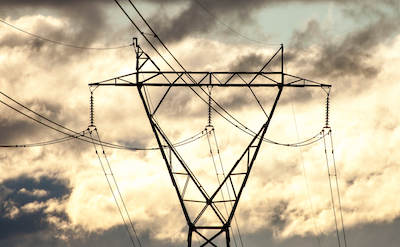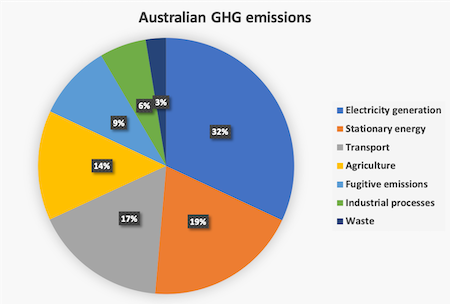Australia’s energy transition
What, exactly, is the government’s big initiative?
At the Dubai COP28 summit the Australian delegation said that we will sign on to the initiative to triple renewable energy generation capacity and double average energy efficiency improvements by 2030. Giles Parkinson has a description of the initiative on the Renew Economy site: Bowen dumps RET for 32GW of auctions in massive policy shift to supercharge renewables.
The commitment Energy Minister Bowen made at Dubai is real. It’s a re-announcement of the decision to hold a reverse-auction process to secure 32GW of new wind, solar and storage capacity by 2030 – known as the Capacity Investment Scheme.
The Grattan Institute’s Tony Wood explains the initiative’s risks, in that the government could be paying heavily if the market price for electricity drops to too low a level, but this risk will probably be managed in the contract terms: Albanese’s risky power play. Also, unlike some other government risk-absorbing schemes that operate on the basis of “socialize the losses, privatize the profits”, this scheme has a cap on profits that may be retained by private investors.
If the government is to achieve its goal there has to be transmission capacity, as Wood points out. “Federal and state governments still need to step up the pressure on building transmission lines to connect all this new renewable capacity to the grid”.

Overpriced but necessary
So far construction of some important transmission lines has met with opposition from a handful of farmers on “environmental” grounds. Some people have had no problem clearing land, running sheep on delicate soils, and letting fertilizers run off into waterways, but they object to the appearance of transmission towers on their land.
If all goes well, and there is no reason it should not, Wood points out, the Capacity Investment Scheme should result in a faster than previously planned reduction in wholesale electricity costs. Unfortunately only a small part of the saving, a quarter maybe, will pass through to consumers, who will still be paying unjustifiably high returns to the owners of privatized and corporatized transmission lines, and the commission agents known as electricity “retailers”.

Also it should be noted that these fine announcements made domestically and at Dubai relate only to electricity. That’s significant – the CSIRO estimates that electricity generation is responsible for a third of our emissions. But so far, apart from some puny concessions for electric cars, we have neglected the transport sector. Transport Minister Catherine King, who must be the most risk-averse member of the Albanese ministry, has stalled on introducing fuel efficiency standards. It’s hard to know why she is stalling: is she afraid of a backlash from those who own and drive 3 tonne twin-cab monster trucks – an identity symbol for those who oppose the Albanese government as a matter of principle.
The waves of climate change deniers
There is a tiny remnant population of outright climate change deniers who assert it’s just not happening. Then there are those who know that the planet has been getting a bit hotter, but who deny that it has anything to do with human activity. One is Tony Abbott, who was recently in London (he gravitates to his country of birth) giving a speech denying the existence of anthropological climate change.
And then there are those who believe we should do nothing about climate change, or perhaps wait another decade or two.
In his regular Saturday Paper contribution John Hewson describes the new climate denial. His article is mainly about the government’s Capacity Investment Scheme, and the fear campaign whipped up by the opposition and its supporters in the right-wing media. “Wild assertions have been made about the supposed consequences [of renewable energy], from unreliability and outages to impacts on household and business power bills” he writes.
He goes on to write about the opposition’s obsession with nuclear power:
Rather than be constructive, the opposition has been babbling at virtually every opportunity about the need for Australia to turn to nuclear for its power without offering any details as to costs and timing, all based on the anticipated but as yet unbuilt and unproven technology of so-called small modular reactors. This policy stance is just pie in the sky, and the opposition’s comments are designed more to be disruptive rather than to make any substantial contribution to the public discourse.
You can hear the Shadow Minister for Climate Change Ted O’Brien put the Coalition’s case for nuclear energy on ABC Breakfast: “Part of a balanced mix”: Coalition continues nuclear energy push. (10 minutes). Mostly it’s unsubstantiated Coalition spin “the government has failed miserably – everybody knows that”. To the extent that the Coalition has any argument, it’s about Australia not following other countries that are committing to treble their nuclear capacity, and the supposed lower cost of nuclear energy.
On the first point, countries making the trebling deal already have an established nuclear energy industry, while we would have to start from scratch. And more to the point, those countries have far less abundant solar and wind resources than Australia has.
Second, the economics of nuclear energy are miserable. By some measures nuclear is cheaper than coal – particularly when the negative externalities of coal are included in the calculations. But renewable sources are so much cheaper again, particularly when combined with technologies for storage and load-shifting.
Hydrogen – hype, hope or hard work?
Hydrogen was all the go until the giant airship Hindenburg exploded in New Jersey in 1937.
It is back in fashion, now as a clean fuel – what can be more enticing than the simple equation H2 + O = H2O?

Hydrogen can replace fossil fuels in almost every application. It can be used in iron-making, replacing metallurgical coal to reduce iron ore. It can power internal combustion engines, with steam rather than carbon monoxide coming out of the tailpipe: Toyota is already making hydrogen-powered cars.
It can be used in domestic gas appliances, but if it were pushed down our network of gas pipes it would probably leak out, because the hydrogen molecule is tiny compared with the methane molecule. But it can be used in alumina refining and cement manufacturing as a replacement for natural gas for calcination.
Hydrogen is produced by several processes, the most straightforward being electrolysis – the application of DC electricity to water. That is emissions-free, however only if the electricity is produced from renewable resources, to produce “green” hydrogen.
The Grattan Institute has produced a research report Hydrogen: hype, hope or hard work, analysing applications where hydrogen can be used most efficiently. They conclude:
The most promising uses of hydrogen are in the production of ammonia, alumina, and iron. These applications could use hydrogen efficiently and cost-effectively at a scale that could support a viable, long-term hydrogen industry that won’t require subsidies.
These processes are not yet financially viable, but they could be if the price of carbon, which is set by the Safeguard Mechanism, were to become high enough. The authors argue that until the carbon price rises to a reasonable level the government should direct support, in the form of direct subsidies, to the use of hydrogen in these industries.
Grattan has a short summary of its report and on ABC Breakfast Tony Wood of Grattan and Fiona Simon of the Australian Hydrogen Council outline the findings of that research and the policy recommendations that flow from it: Calls for sharper hydrogen focus as fuel for future. (3 minutes)